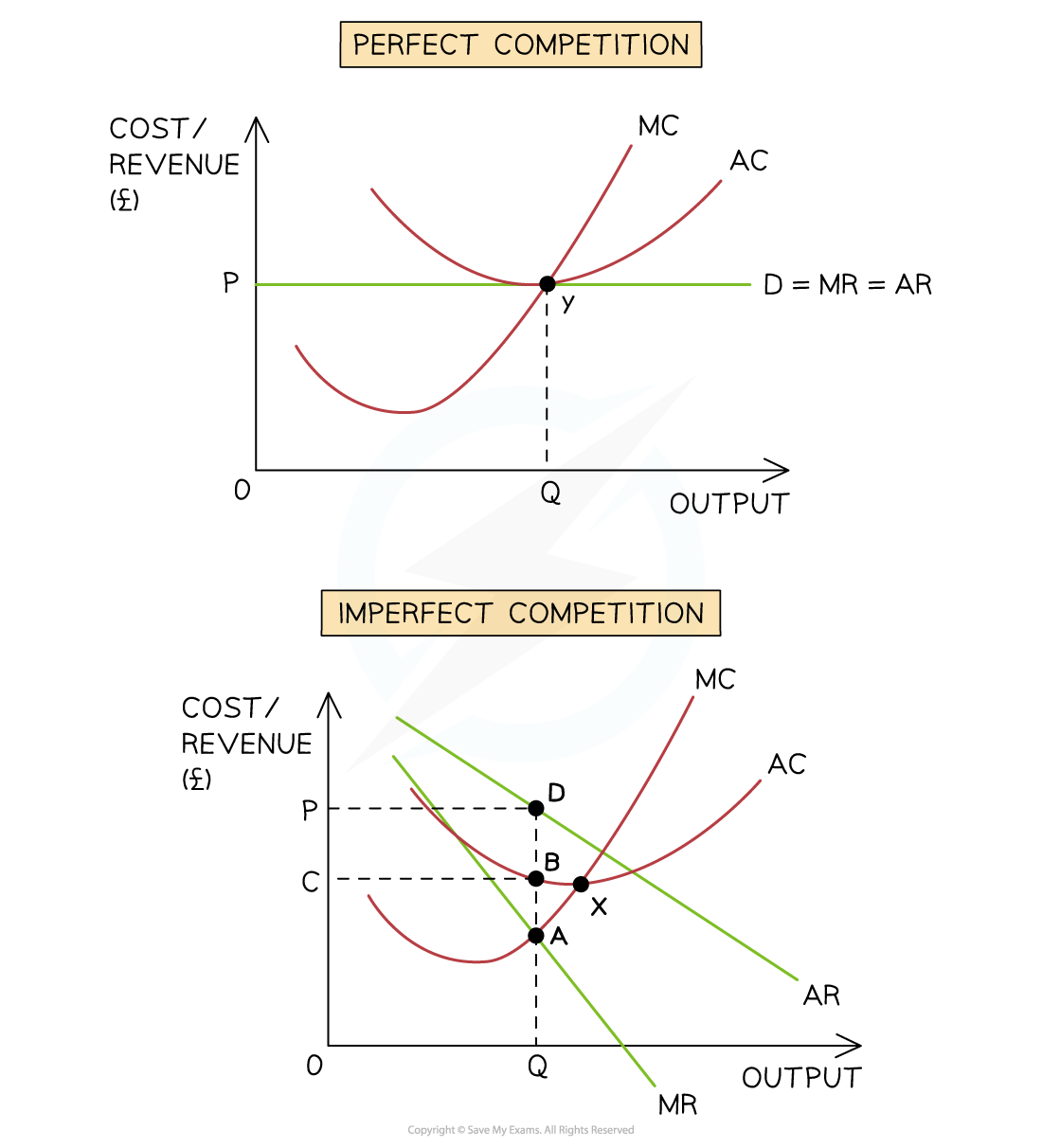- 翰林提供学术活动、国际课程、科研项目一站式留学背景提升服务!
- 400 888 0080
Edexcel A Level Economics A:复习笔记3.4.1 Efficiency
Types of Efficiency
An Explanation of the Four Types of Efficiency
| Allocative Efficiency |
|
| Productive Efficiency |
|
| Dynamic Efficiency |
|
| X-inefficiency |
|
Efficiency & inefficiency in Different Market Structures
- Market structures are the characteristics of the market in which a firm or industry operates
- These characteristics typically include
- The number of buyers
- The number & size of firms
- The type of product in the market (homogenous or differentiated)
- The types of barriers to entry and exit
- The degree of competition
- These characteristics typically include
- Market structures can be separated into perfect competition & imperfect competition
- Imperfect competition includes the following market structures
- Monopolistic
- Oligopoly
- Monopoly
Efficiency & Inefficiency in Perfect/Imperfect Competition

A perfectly competitive market on the top which experiences allocative & productive efficiency. An imperfect market on the bottom in which inefficiencies exist at the profit maximisation level of output
Perfectly competitive market diagram observations
- The firm produces at the profit maximisation level of output where MC=MR (Y)
- The firm is productively efficient as MC=AC at this level of output
- The firm is allocatively efficient as AR (P)=MC
- The firm is unlikely to experience dynamic efficiency as it is unlikely to have supernormal profits to reinvest
Imperfectly competitive market diagram observations
- The firm produces at the profit maximisation level of output where MC=MR (A)
- The firm is not productively efficient as AC > MC at this level of output (B-A)
- Productive efficiency would occur at point E where MC=AC
- The firm is not allocatively efficient as AR (P) > MC at this level of output (D-A)
- Allocative efficiency would occur where AR=MC
- The firm is likely to experience dynamic efficiency as it will be able to reinvest its profits so as to increase innovation
转载自savemyexams
站内搜索
竞赛真题免费下载(点击下载)
在线登记
最新发布
© 2024. All Rights Reserved. 沪ICP备2023009024号-1





